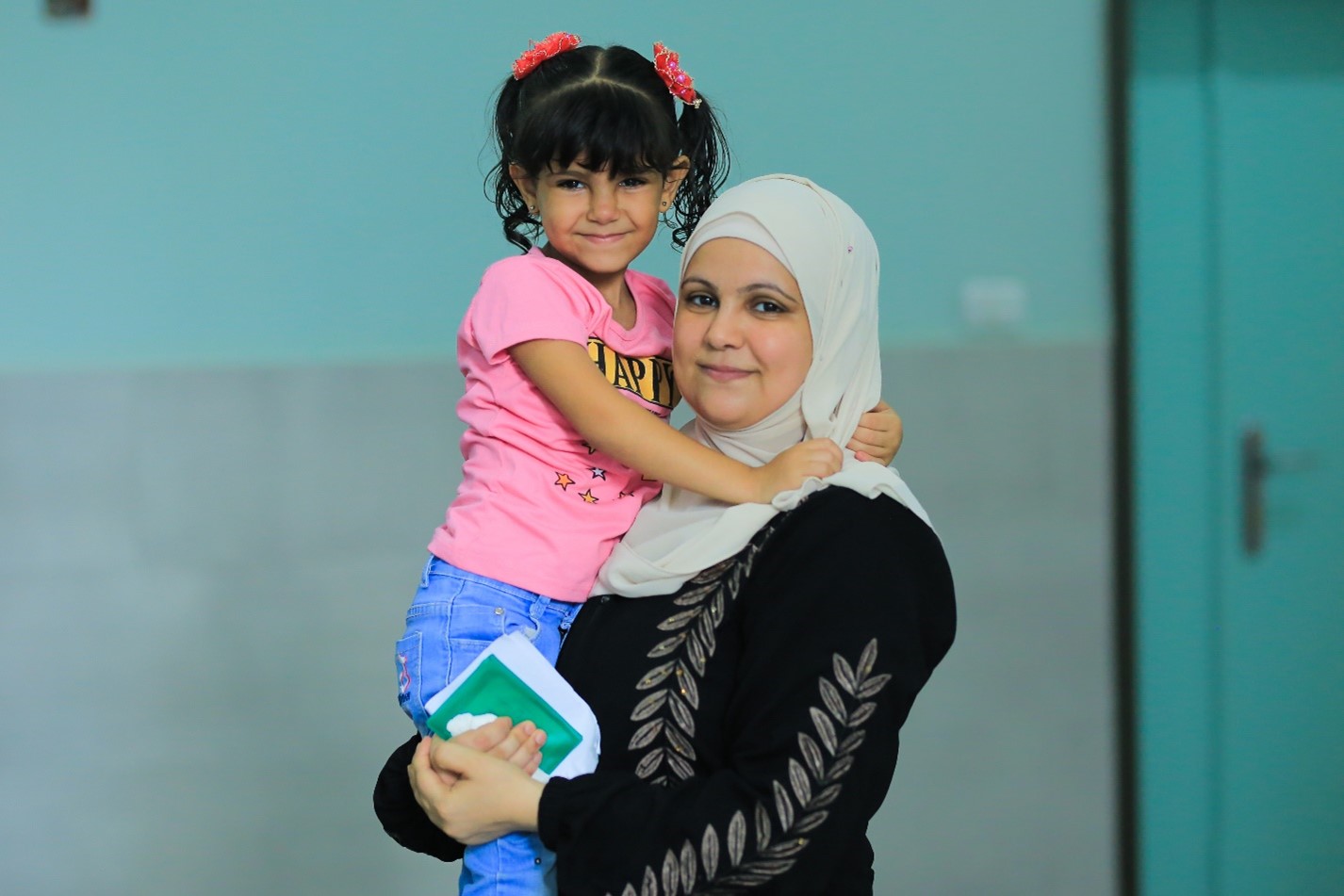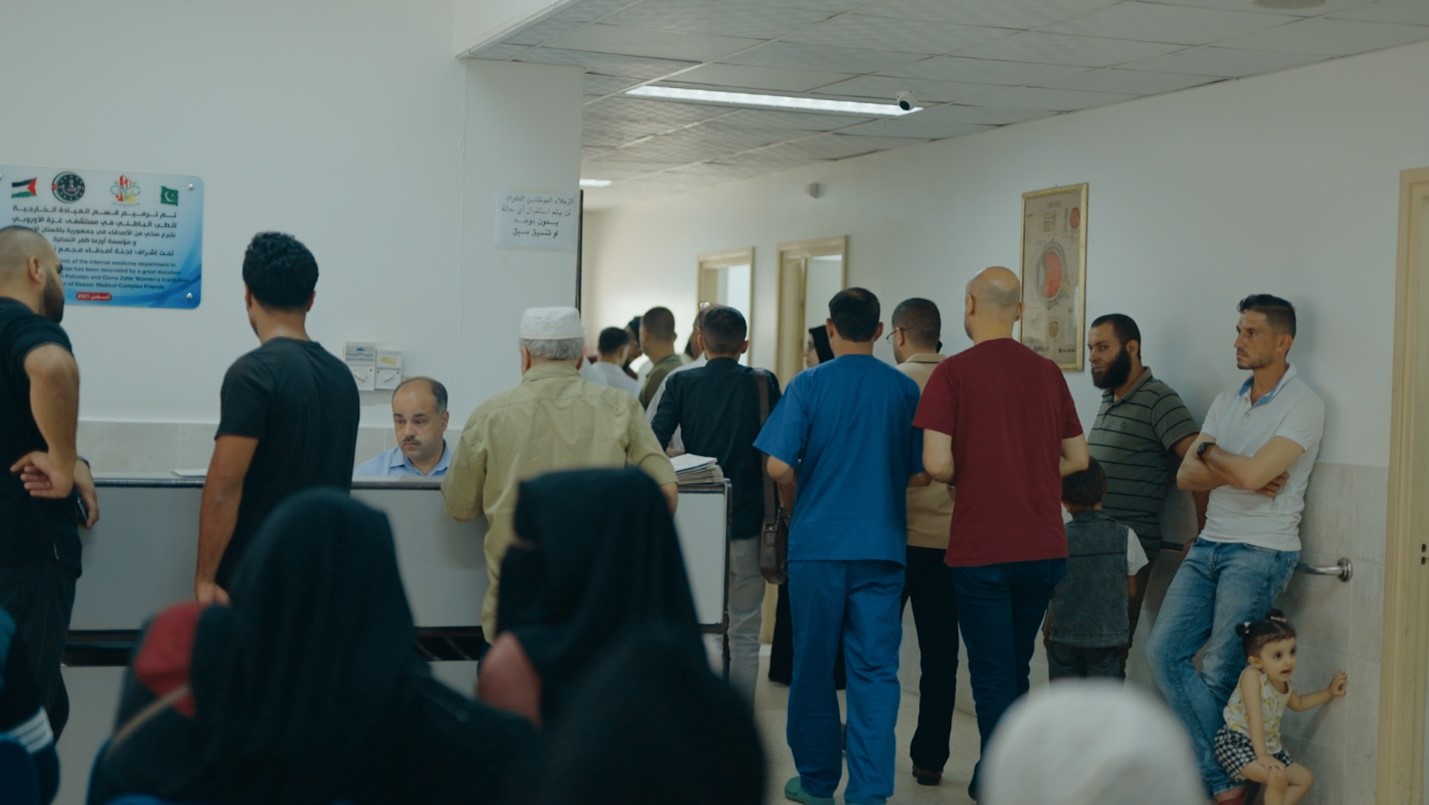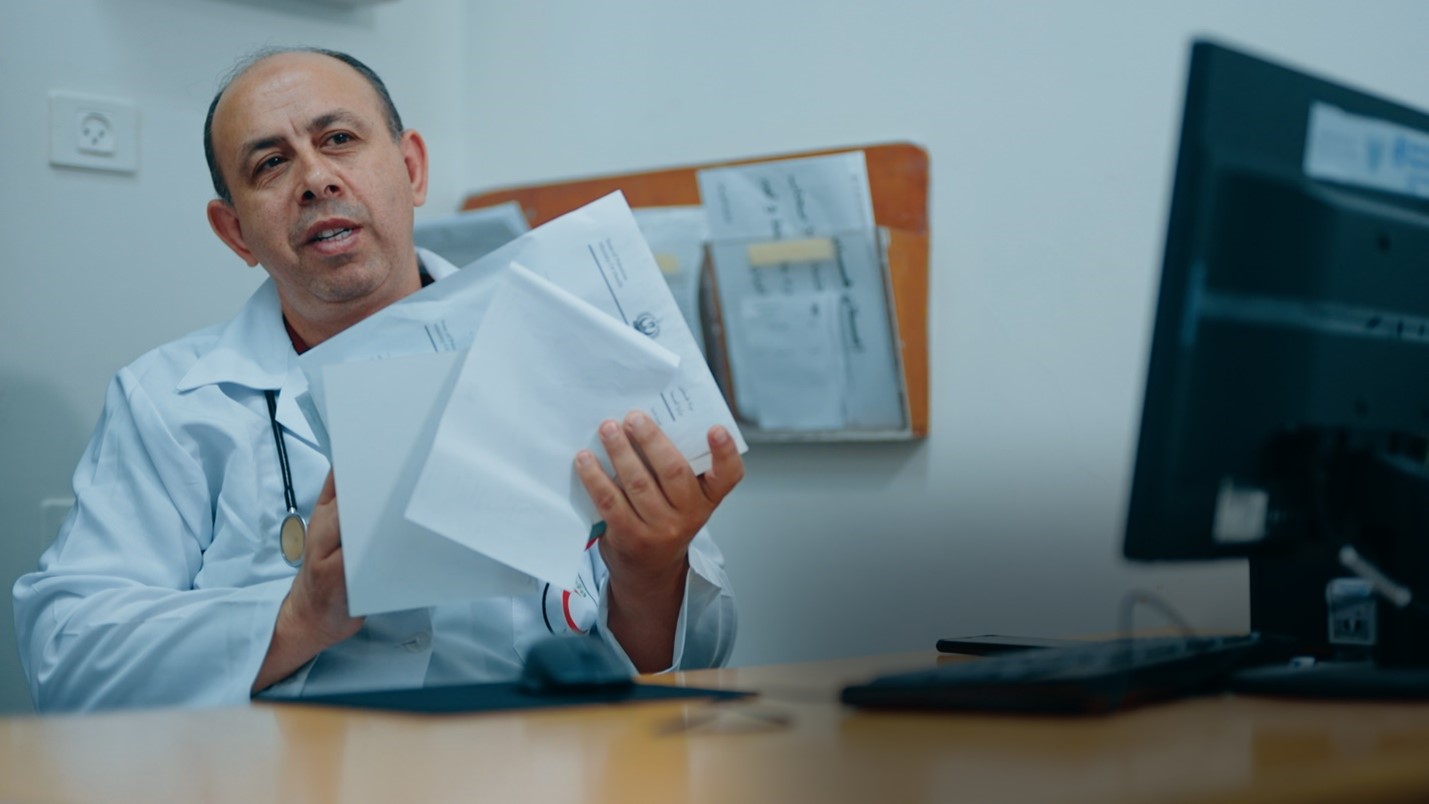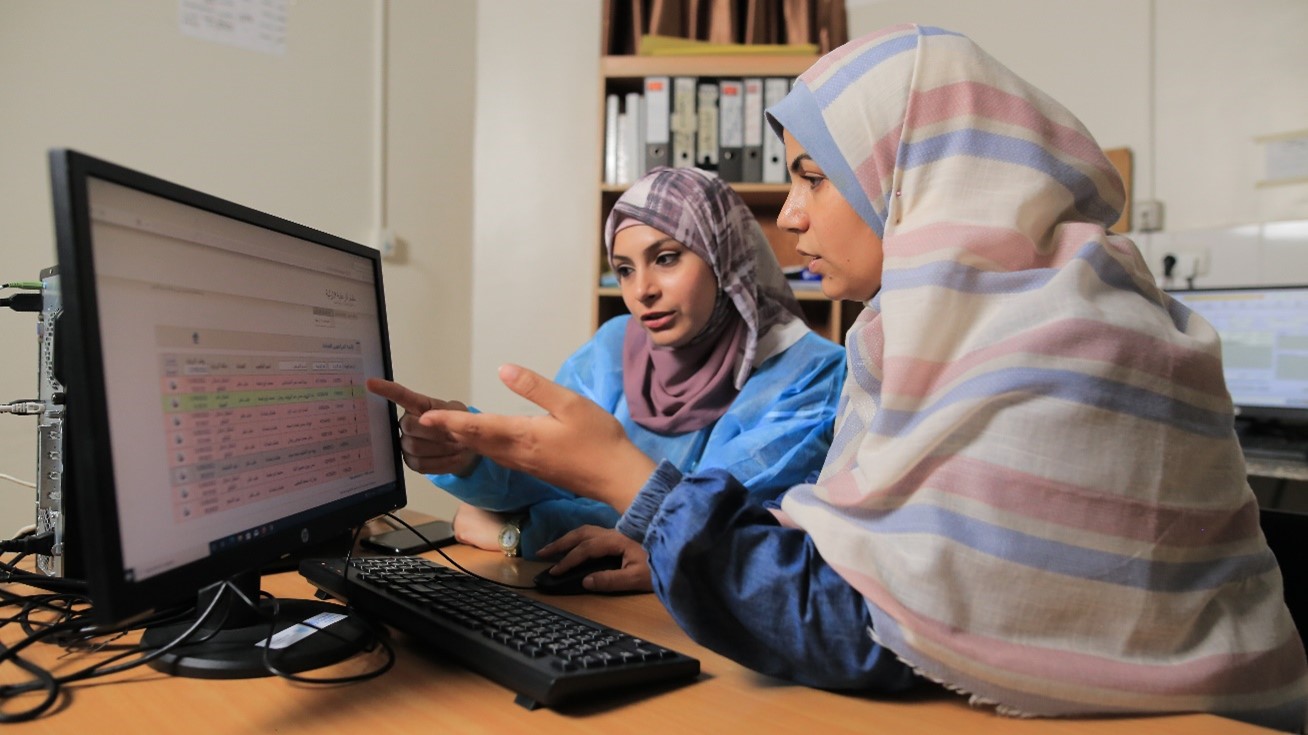10 January 2023 – Khetam, a mother of 2, has only brought one of her daughters to the primary health centre, though both are sick and in need of medical attention.
Her younger daughter has a very high fever and weakness. Khetam has had to prioritize her treatment today.
 Khetam and her daughter at the Jabaliya Health Centre, Gaza Strip
Khetam and her daughter at the Jabaliya Health Centre, Gaza Strip
“If I brought my other daughter too, we would have had to spend more time waiting to see the doctors, doing the paperwork, and running from one department to the other. If I forgot any of their medical notes, x-rays, or prescriptions, I’d have to spend even more effort going back and forth in trying to arrange these documents to get the treatment and medicines,” Khetam says.
 Patients queue outside the doctor's office, Jabaliya Health Centre, Gaza Strip
Patients queue outside the doctor's office, Jabaliya Health Centre, Gaza Strip
In the past, she has sometimes waited hours to get the administrative paperwork done only to then be met with long queues outside the doctor’s office, which often end in bitter disagreements between patients over who’s turn it is.
For many like Khetam, this makes seeking health care for even the simplest of issues quite daunting, time-consuming and tiring.
A pleasant surprise
Today, Khetam’s visit to the health centre has been unlike in the past. She had blocked a few hours from her day but is pleasantly surprised at how quickly she has been able to see the doctor and get the medicines for her daughter.
“I didn’t have to spend ages getting the paperwork done, I didn’t have to wait a long time to see the doctor and now I’m on the way to the pharmacy without having to carry any files or prescriptions. The doctor has already sent it to them online. If I knew the system had changed and is so much quicker, I would have brought my other daughter for treatment too,” she says.
Change is under way at the Jabalia, Deir Al-Balah, and Sheikh Redwan primary health care centres in the Gaza Strip, which cover a catchment population comprising 180 000 people. With support from the Big Heart Foundation, WHO has facilitated expansion of the electronic health information system at these 3 centres. The system has already been introduced at 24 primary health care centres by the Gaza Ministry of Health, and other health partners.
 Dr Abdelkarim looks at a patient's history on the new electronic health information system, Jabaliya Health Centre, Gaza
Dr Abdelkarim looks at a patient's history on the new electronic health information system, Jabaliya Health Centre, Gaza
Change is being felt by everyone
The new paperless system has drastically streamlined patient information management and improved data flow between all departments, allowing seamless connectivity. Everything from the moment patients enter the health centre until they leave is now being managed through a unified system. This includes administrative paperwork for registering patients to receive treatment.
 Riyad, who is suffering from an infection caused by stones in the urinary tract has come to the health centre for a check-up. His visit has gone smoothly.
Riyad, who is suffering from an infection caused by stones in the urinary tract has come to the health centre for a check-up. His visit has gone smoothly.
“I came in, was given my number and saw the doctor without having to wait. Now, I’m on my way to the laboratory to get some tests. The doctor has already sent the test request to the laboratory, and I do not need to carry any papers there,” says Riyad.
By eliminating the need for patients to carry files and allowing better management of patient flow, thus limiting crowding, the new system is ensuring delivery of faster, hassle-free, and better quality health care services.
Improvements are also being felt by health workers.
“I used to have to do volumes of paperwork for each patient, but the system has really simplified my work and made data recording more accurate and reliable. It’s very easy to pull up someone’s medical history even if they lose previous reports,” says Dr Hesham, Family Doctor, Jabaliya Health Centre.
 Dr Hesham shows the volume of paperwork he had to fill prior to the new electronic information system being introduced
Dr Hesham shows the volume of paperwork he had to fill prior to the new electronic information system being introduced
Physicians can now record patient history, display test results, write prescriptions, order tests, receive clinical reminders, and print instructions, through one platform. The real-time, patient-centred records can then be made available instantly to other departments as needed, without the need for extensive paperwork, limiting human error.
 Since August 2022, approximately 119 health workers across the 3 primary health care centres have been trained in using the electronic health information system
Since August 2022, approximately 119 health workers across the 3 primary health care centres have been trained in using the electronic health information system




